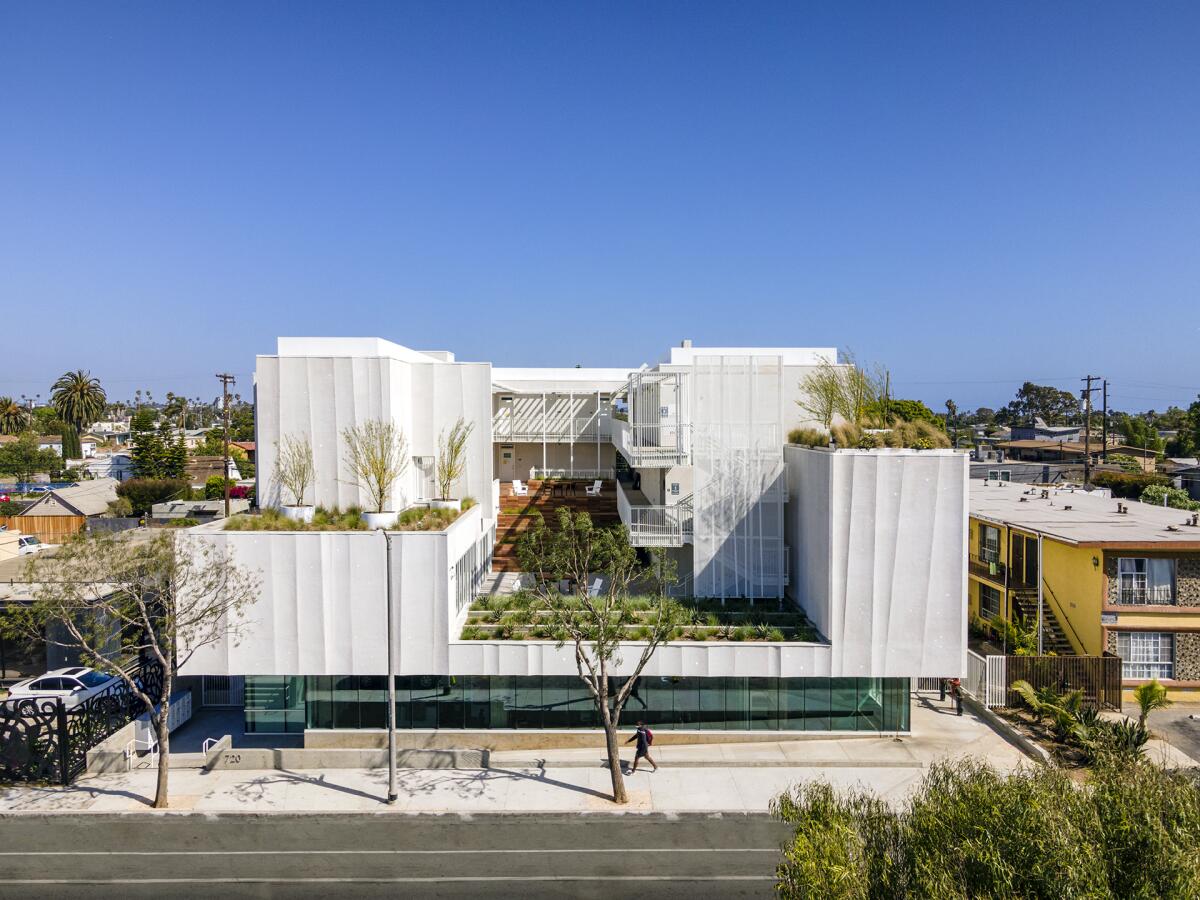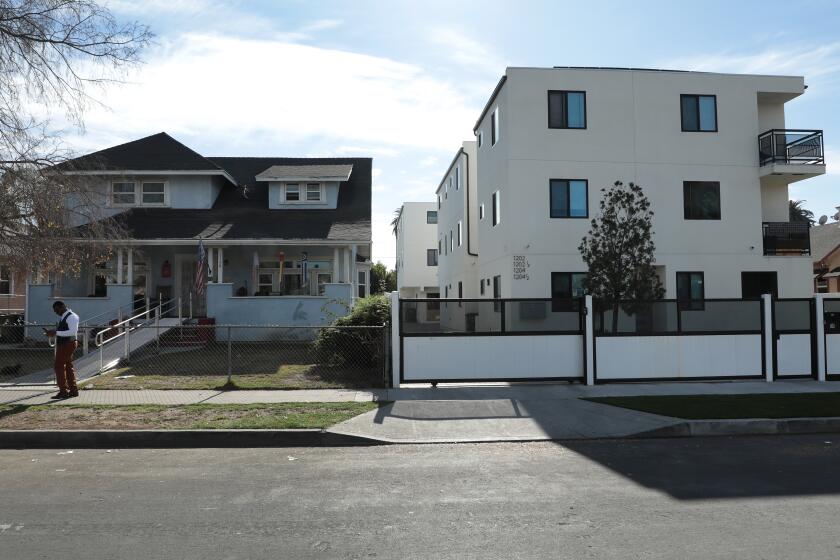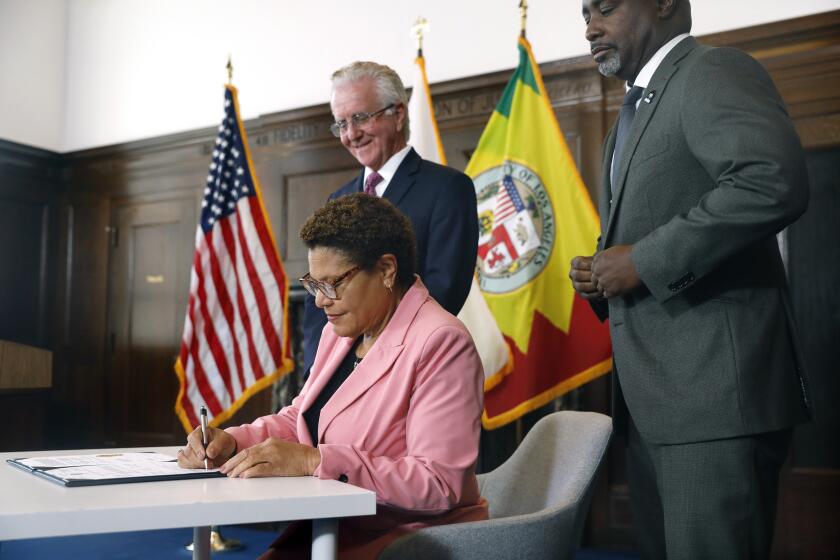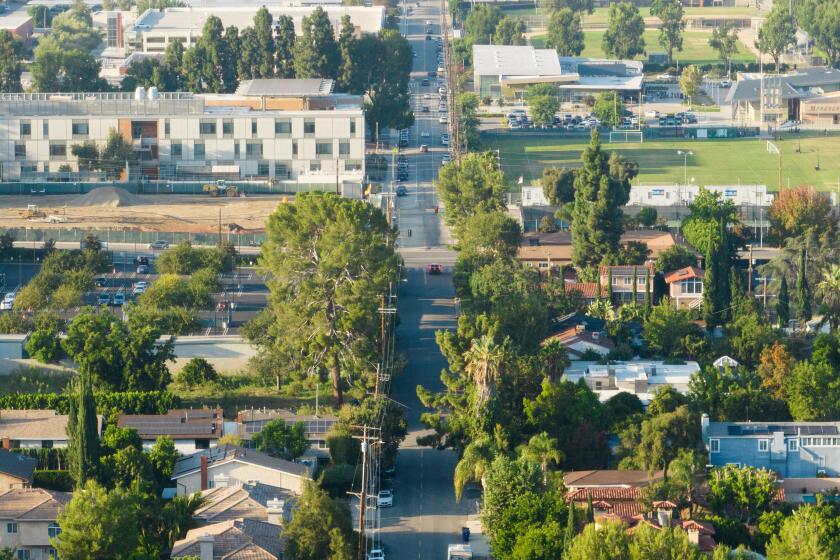Editorial: L.A. can’t become an affordable, livable city by protecting single-family zoning

- Share via
In 2021, Los Angeles adopted one of California’s most ambitious housing plans. City leaders committed to passing pro-development policies and rezoning enough land to accommodate 455,000 new units of housing, with nearly 185,000 for low-income residents.
The plan could be transformational, and not just because the city is making room for five times more homes than in previous plans. This one aims to comply with fair-housing law by putting affordable housing in high-opportunity communities, such as Encino, parts of Hollywood and the Westside, which have lots of jobs, good schools, transit stops, parks and other amenities. That would be a shift from historic patterns of segregation that concentrated affordable housing in lower-income, lower-resourced communities, such as South L.A. and the Northeast San Fernando Valley.
Now, however, the city is backing off its earlier ambition — by taking single-family zones off the table for new apartments and townhomes.
Los Angeles has created an ambitious plan to build more housing, especially affordable housing, throughout the city.
That decision will diminish the effectiveness of key programs to put more affordable housing near transit, high-opportunity communities and so-called “Opportunity Corridors,” which include major streets in affluent neighborhoods, such as Westwood, Sherman Oaks and the Mid-Wilshire area. It also limits the availability of land for low-rise apartments, townhomes and bungalow courts that could soften the visual transition between single-family homes and 4- or 5-story apartment buildings on busy corridors, while filling a need in the middle-income housing market. These programs are the backbone of L.A’s housing plan.
But housing advocates now wonder how L.A. can possibly meet state requirements to plan for half a million new homes while reducing segregation. More than 76% of the land in affluent neighborhoods is zoned for single-family homes. Excluding those properties does not leave enough land available to build the number of affordable and mixed-income housing the city needs.
The city put forth ambitious programs to meet California mandates for affordable housing — and then weakened them by exempting single-family neighborhoods.
Instead, developers will concentrate building on land already zoned for multifamily units — and will likely displace current tenants by demolishing small, often rent-controlled apartments to build bigger complexes. Yes, Los Angeles needs a lot more housing but the current strategy fuels displacement and gentrification while leaving three-fourths of affluent residential areas untouched.
The decision to exempt single-family zones perpetuates unfair land use patterns, a coalition of housing groups wrote last month in a letter to city leaders, and means “most of the city’s wealthiest and most privileged areas will remain off-limits to mixed-income multi-family housing development.”
The city might make permanent a directive from Mayor Bass that streamlines development. But in its current form, the policy threatens to make low-income Angelenos homeless.
The Planning Department acknowledged during a public hearing this spring that the changes will reduce the number of sites that can be developed and make it harder to achieve equity goals in the housing plan. But, officials said, they were flooded by opposition from homeowners’ groups and others, and directed by the City Council to remove single-family zoning from the programs.
That’s a shame. Mayor Karen Bass and the City Council cannot just listen to the loudest voices resistant to change. Surveys have repeatedly shown that most Angelenos think housing and homelessness are the most pressing problems in the city and they support building to ease the lack of affordable housing — including in single-family neighborhoods close to transit, jobs, parks and other amenities.
Mayor Karen Bass announced Executive Directive 1 as a signature policy to speed up affordable housing. But limiting it to multi-family neighborhoods is shortsighted.
State law requires that the housing plan take effect on Feb. 15, 2025, which means the policies and programs have to be adopted by the City Council and approved by Bass this fall. The Planning Department deserves credit for including many smart, strong programs within the housing plan, and for working on a fast timeline.
For example, the plan will help fast track affordable and mixed-income apartment construction on major streets near transit and in more affluent neighborhoods that have historically tried to block multifamily housing. It includes stronger renter protections and requirements that when rent-stabilized units are demolished, they are replaced in the new buildings. The plan also makes it much easier for religious institutions to build affordable housing on their properties, even in single-family zones.
But by excluding single-family zones from other programs, L.A. is hobbling its ambitions and squandering the potential to transform the city. The mayor and City Council should direct the Planning Department to put single-family zones back on the table. L.A. will not become an affordable, livable city for the next generation by protecting the status quo.
More to Read
A cure for the common opinion
Get thought-provoking perspectives with our weekly newsletter.
You may occasionally receive promotional content from the Los Angeles Times.














